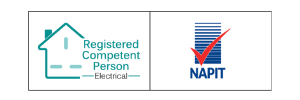Have you noticed flickering lights or warm outlets in your home? These could be signs that your electrical system isn’t up to par.
Consider an inspection if your house is over 30 years old or you’ve added new appliances. Ignoring these issues can lead to serious risks.
Let’s explore the common signs that indicate your home may need rewiring and why addressing them is crucial.
Common Signs That Indicate Rewiring Is Needed
Outdated or damaged electrical wiring can pose serious safety risks. Recognising the signs early can prevent electrical fires, equipment damage, and inconvenience.
Warning Signs of Electrical Issues
If you’ve noticed any of the following, it may be time to call a licenced electrician:
- Flickering or dimming lights.
- Frequent circuit breaker trips or blown fuses.
- Warm or discoloured outlets.
- A persistent burning smell near outlets or switches.
These red flags shouldn’t be ignored, as they can indicate faulty or overloaded wiring.
When to Consider a Complete Rewire
Some situations make rewiring a wise investment for safety and functionality:
- Homes over 30 years old with original wiring.
- Insufficient power for new appliances or devices.
- Heavy use of extension cords due to limited outlets.
Modern electrical needs require updated systems. If your current setup can’t keep up, rewiring ensures your home remains safe, efficient, and up to code.
Risks of Ignoring Electrical Wiring Issues
Overlooking electrical problems can seriously risk your home and safety. Minor signs often point to major underlying issues.
Fire and Shock Hazards
Faulty wiring isn’t just an inconvenience—it’s a significant safety threat.
- Increased risk of electrical fires.
- Possibility of electric shocks or electrocution.
- Damage to appliances and electronics.
These dangers can escalate quickly if not addressed, endangering lives and property.
Long-Term Consequences and Costs
Ignoring minor electrical issues now can lead to bigger, more expensive problems later.
- Frequent power outages or surges.
- Higher energy bills due to inefficient wiring.
- Costly emergency repairs.
Delaying repairs might seem harmless, but it often results in larger financial burdens down the road.
Take Action Early
Staying proactive with electrical maintenance protects your home, prevents damage, and provides peace of mind. Don’t ignore the warning signs—consult a licenced electrician before it’s too late.
Steps to Ensure Your Home’s Electrical Safety
Electrical safety starts with awareness and routine care. A few simple steps can significantly reduce the risk of hazards in your home.
Routine Visual Inspections
Regular checks help catch minor issues before they become big problems.
- Look for frayed cords, scorch marks, or loose plugs.
- Check outlets for warmth, buzzing sounds, or discolouration.
- Ensure all plugs fit securely into sockets.
If anything seems off, replace or repair the component immediately.
Test Your Circuit Breakers
Your circuit breakers play a critical role in protecting your home.
- Manually check trip breakers to ensure they’re working correctly.
- Label each circuit clearly for quick identification.
- Replace any that fail to reset or trip too easily.
Keeping them in top condition helps prevent overloads and fires.
Hire a Licenced Electrician
Professional inspections reveal hidden issues.
- Schedule an inspection every 3–5 years.
- Update outdated wiring or panels.
- Get expert advice on current safety standards.
Educate Your Family
Make sure everyone knows basic safety steps.
- Avoid overloading outlets.
- Use surge protectors for electronics.
- Know how to respond in an electrical emergency.
By staying vigilant and following these essential steps, you can significantly reduce the risk of electrical hazards and ensure your home remains a safe and efficient space for everyone. From regular inspections and circuit breaker testing to involving a licenced electrician and educating your family, each action plays a vital role in preventing accidents.
Electrical safety isn’t just about avoiding inconvenience—it’s about protecting your property, investment, and, most importantly, the people you care about most.








